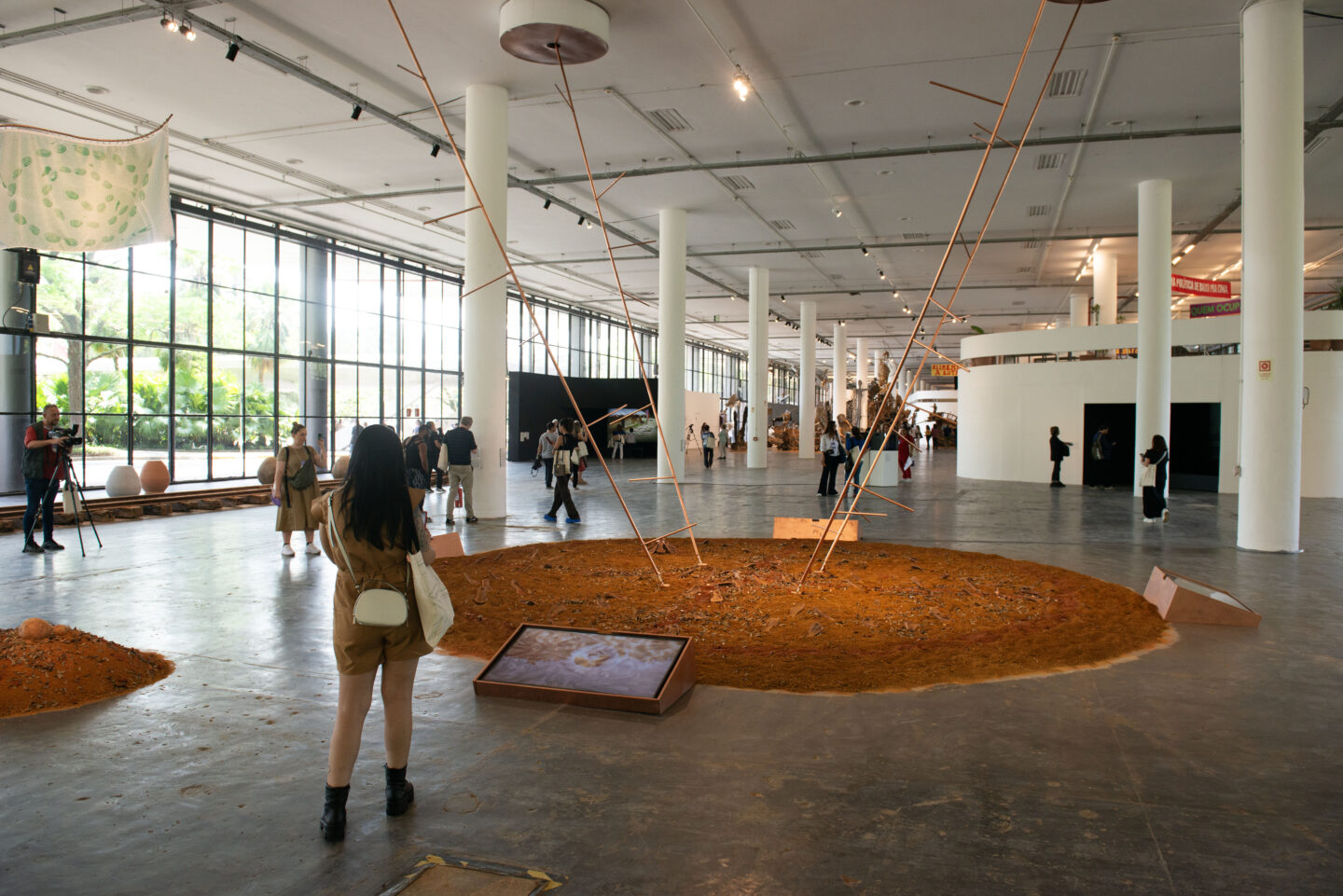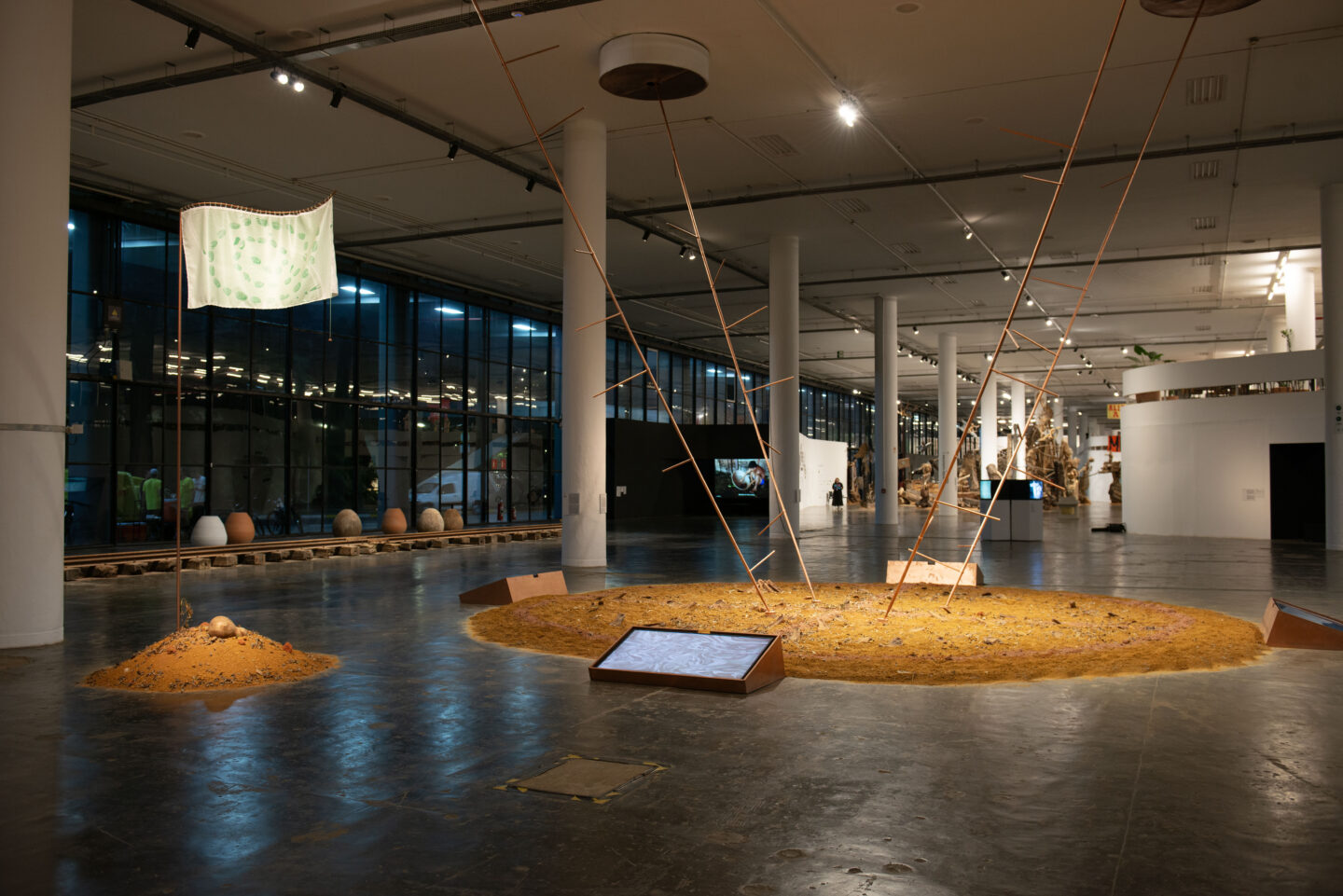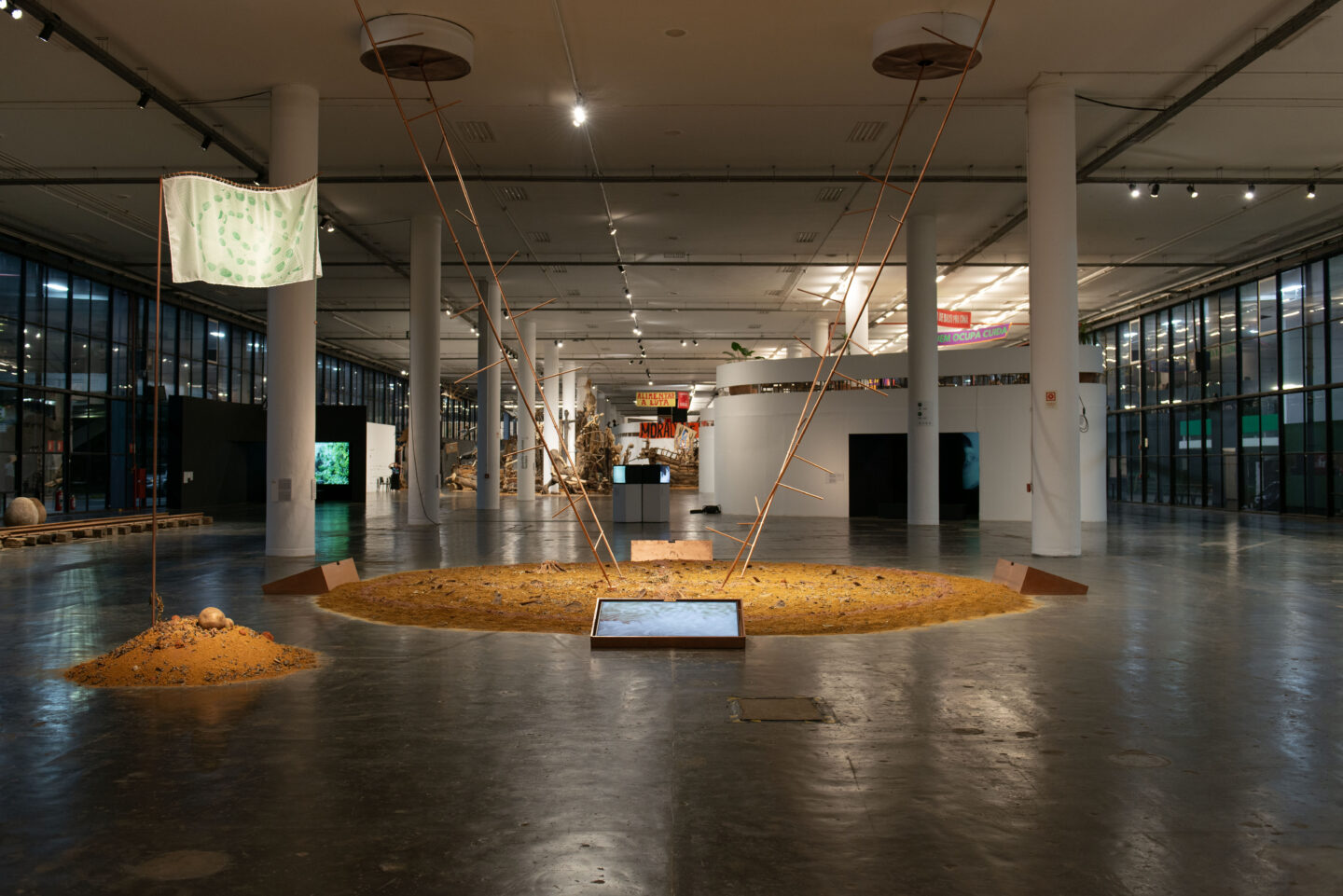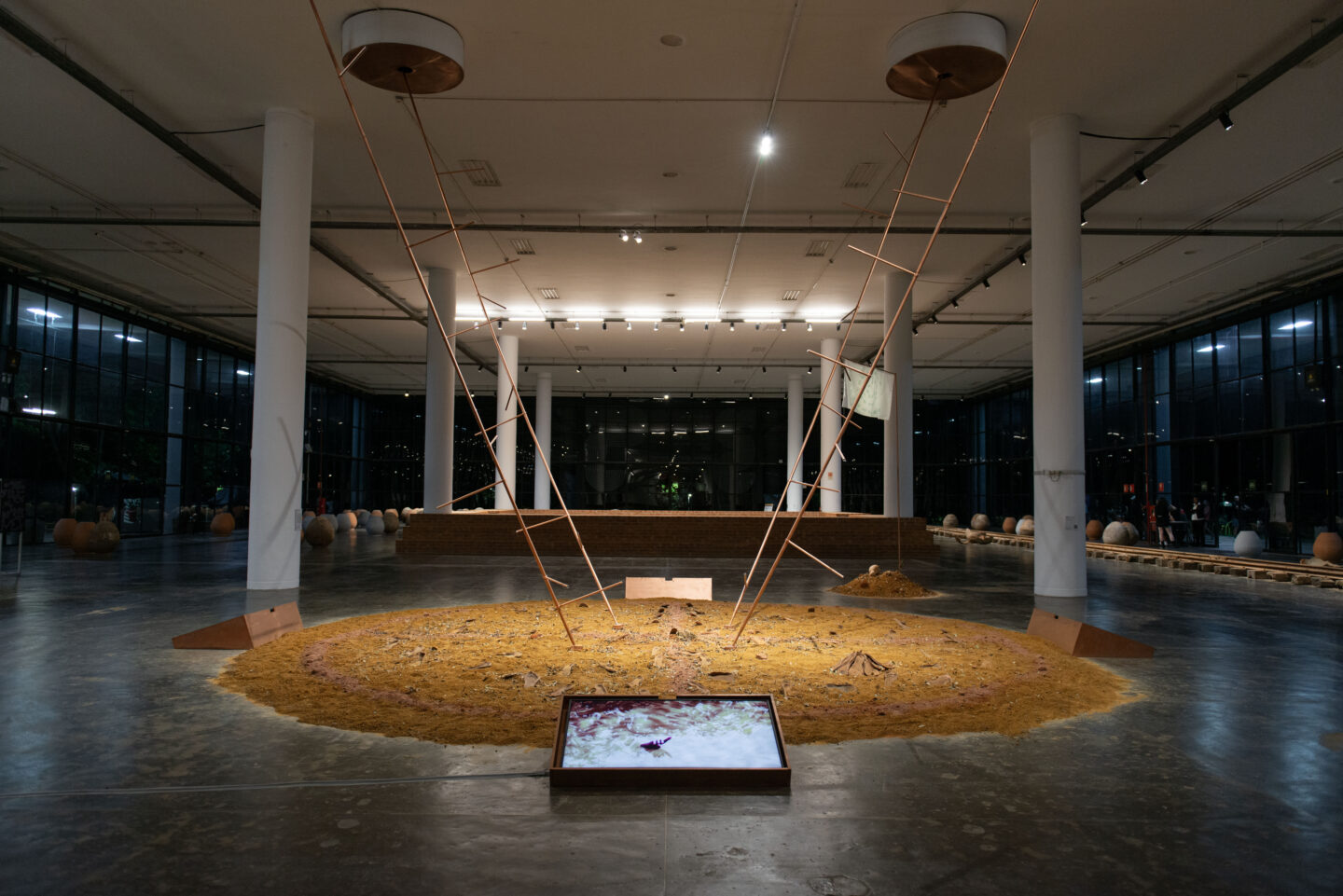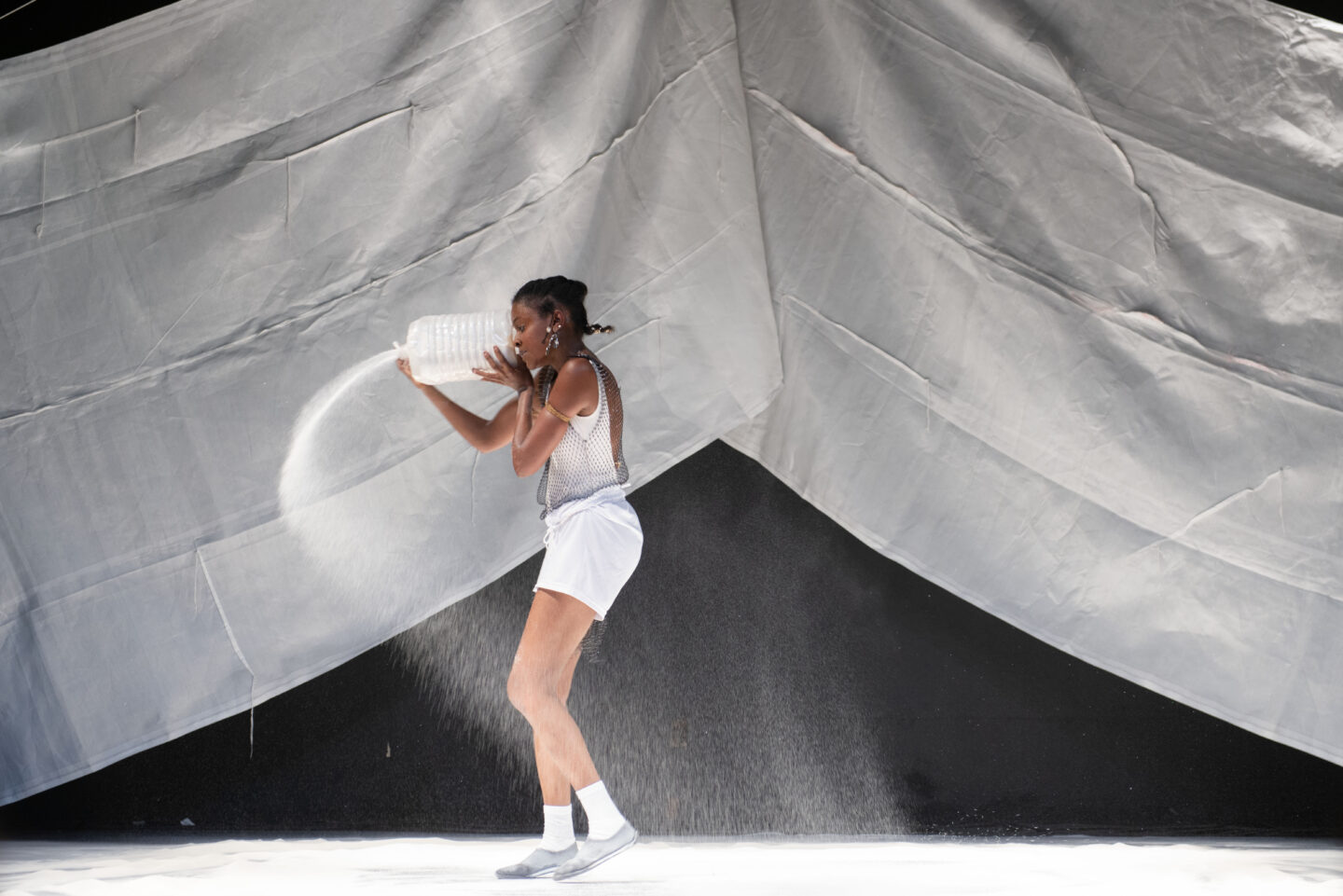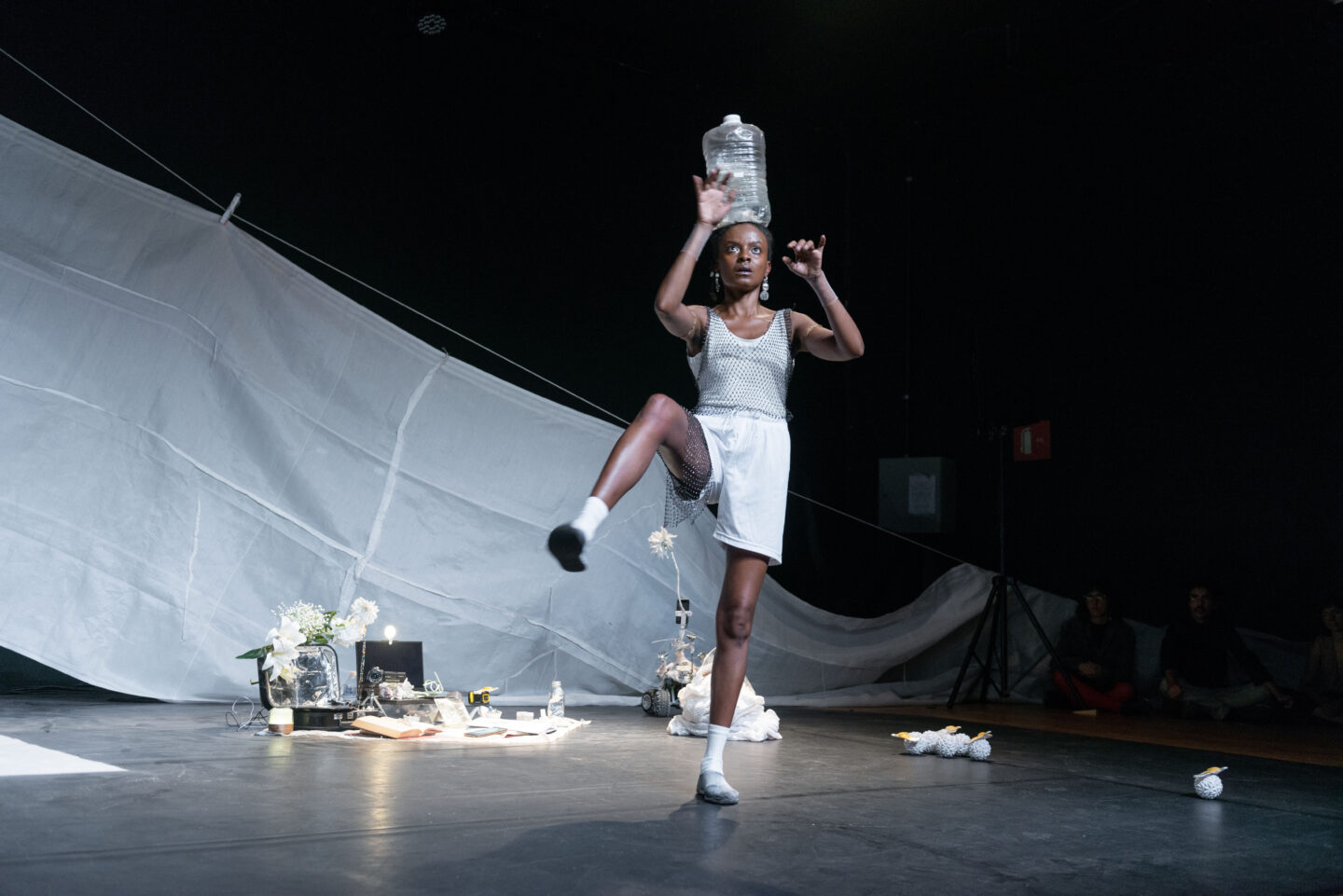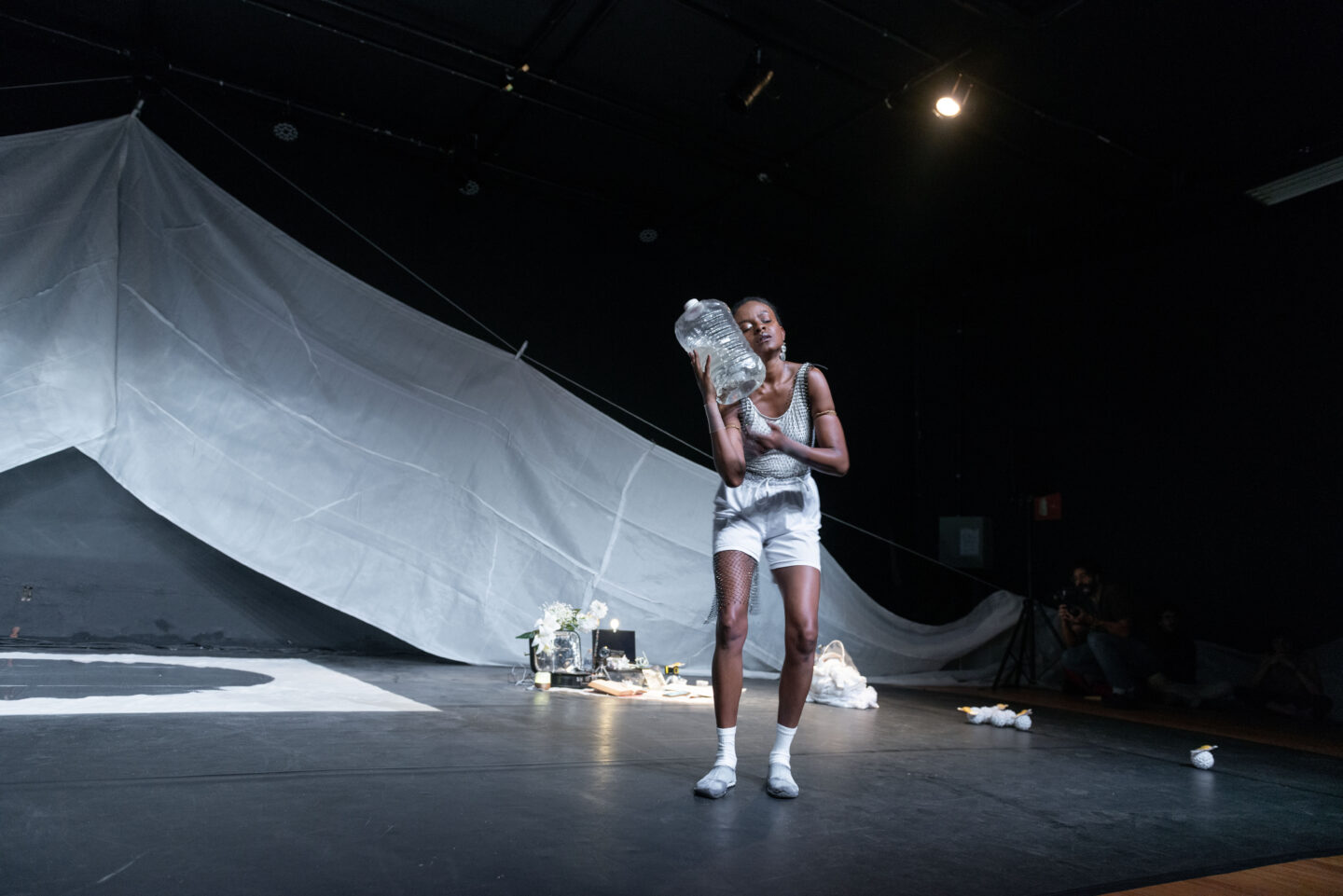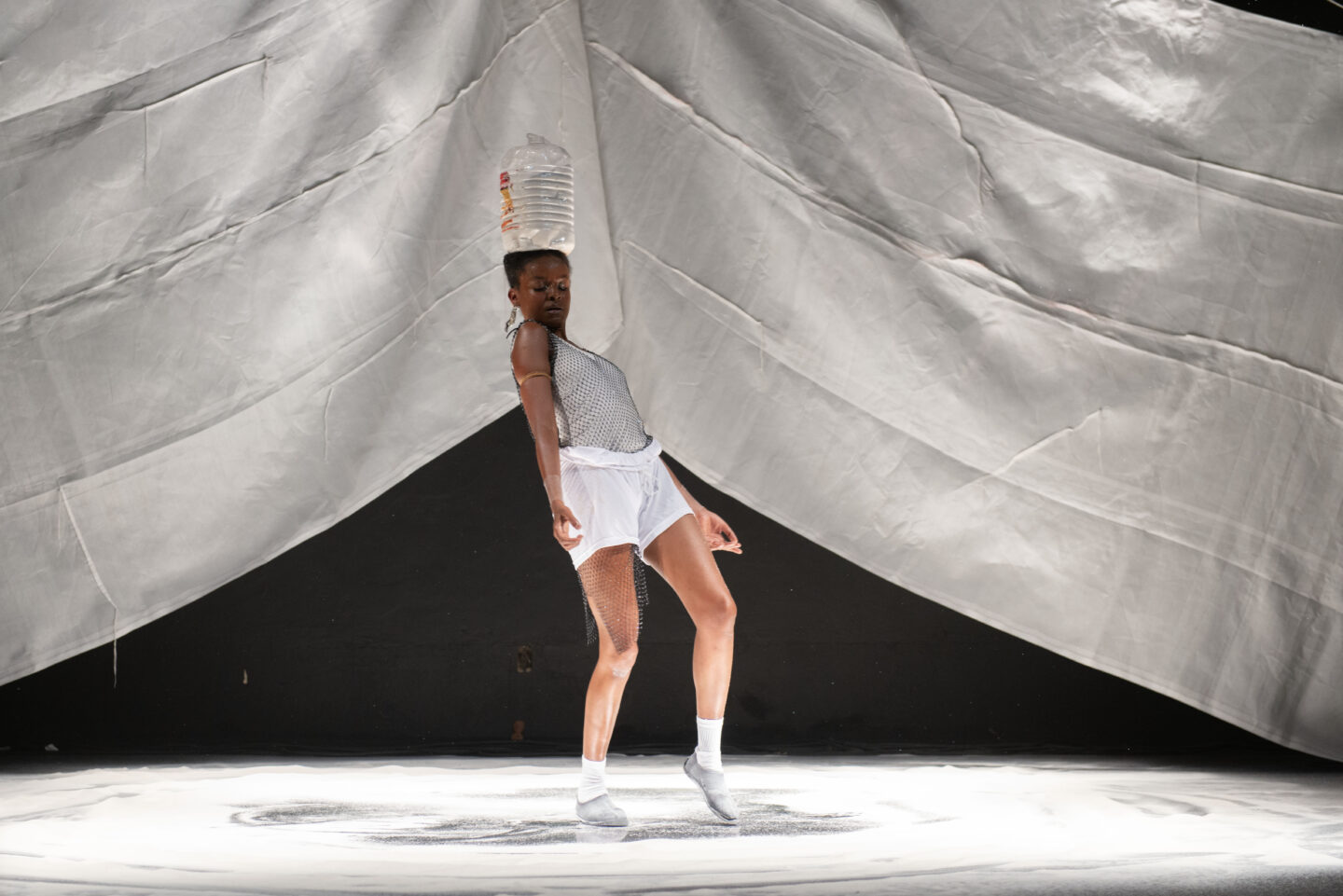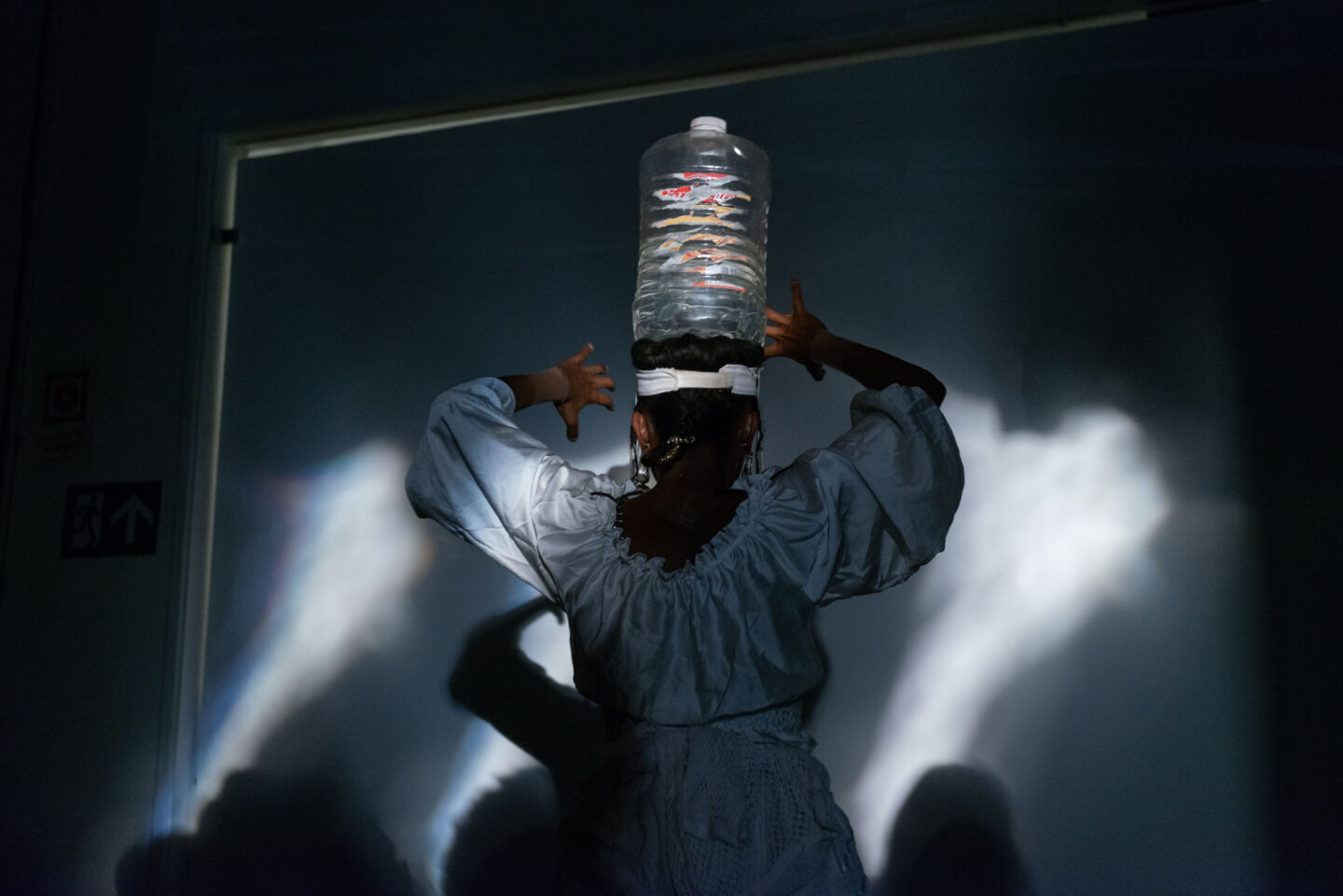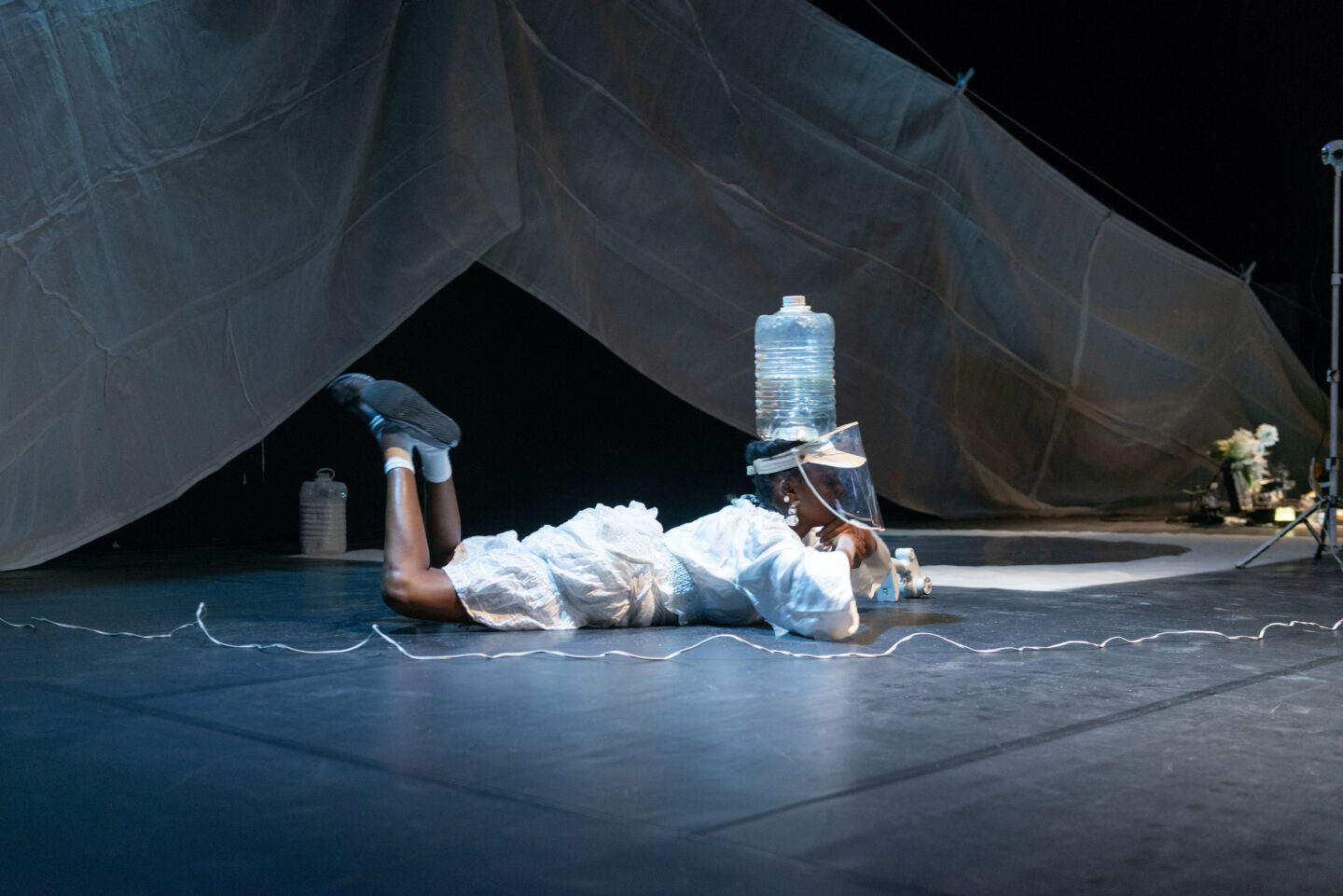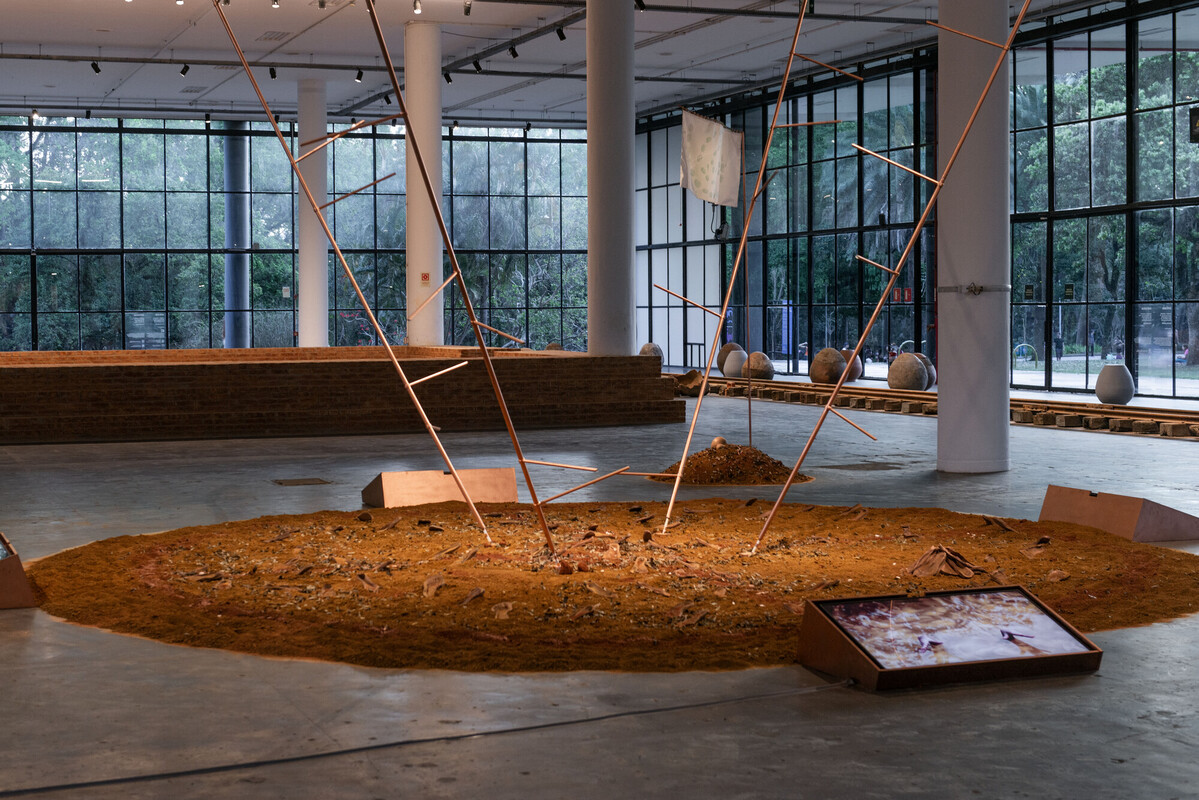
Ana Pi & Taata Kwa Nkisi Mutá Imê
“The unity is submarine…”
− edward kamau brathwaite
Ana Pi is a mover of body and spirit who integrates notions of transit and displacement through ordinary gestures, colors, and sounds. Taata Kwa Nkisi Mutá Imê is the head of Casa dos Olhos do Tempo que Fala da Nação Angolão Paketan Malembá–Nzo Mutá Lombô Ye Kayongo. Since the 1980s, she has shaped a methodology for teaching and researching sacred dance throughout the African Diaspora, engaging nkisis, voduns, orixás, caboclos, and encantados through movements that balance mental, physical, and spiritual dimensions. Together, “these practitioners make use of spaces that cannot be seen.”¹ In tandem, they write with their bodies, stitching together spaces and memories in order to move beyond the choreography of the stage into movements of everyday life.
Their collaboration has birthed a transnational expressive project that triangulates Brazil, France, and Senegal. In form, “the networks of these moving, intersecting writings compose a manifold story that has neither author nor spectator, shaped out of fragments of trajectories and alterations of spaces.”² It is an embodied, poetic rumination on pathways across beaches and cobbled streets, entering and emitting from institutional collections at the Institut Fondemental d’Afrique Noire (IFAN), Dakar, Senegal, and Musée du Quai Branly, Paris, France. These makers share a commitment to the errant, which in reality is “the postulation of an unyielding and unfading sacred.”³ While they acknowledge a form of thinking inscribed through vision, they embrace knowledge that emanates from the body in the traces we leave, in the sighs we emit. Theirs is a collaboration committed to the peripheral — a mental space where the unsure can become a place of construction; a place where one goes looking for the image seared in the mind’s eye, but returns with seeds, ready to grow new worlds.
oluremi onabanjo
Ana Pi (Belo Horizonte, MG, Brazil, 1986. Lives in Montreuil, France) is a choreographic and visual artist, researcher of Afro-diasporic and urban dances, extemporary dancer, and pedagogue. Her practices intertwined through travel. Her work is situated among the notions of transit, displacement, belonging, superposition, memory, colors, and ordinary gestures.
Taata Kwa Nkisi Mutá Imê (Salvador, BA, Brazil, 1956. Lives in Salvador) is a candomblé supreme priest. His main activities center around preserving the Kongo Angola ancestral wisdom by bringing Bantu philosophies and Bakongo technologies to contemporary society. Since the 1980s, he has been developing a methodology for teaching and researching sacred dances of the African diaspora.
1. Michel de Certeau, “Walking in the City,” in The Practice of Everyday Life (1980), trad. Steven Rendall. Berkeley: University of California Press, 2010, p. 93.
2. Ibid, p. 93.
3. Édouard Glissant, Poetics of Relation (1990), trad. Betsy Wing. Ann Arbor: University of Michigan Press. 1997, p. 21.
- Vista da instalação ANTENA IA MBAMBE Mimenekenu Ê lá Tempo! de Ana Pi e Taata Kwa Nkisi Mutá Imê durante a 35ª Bienal de São Paulo – coreografias do impossível © Levi Fanan / Fundação Bienal de São Paulo
- Vista da instalação ANTENA IA MBAMBE Mimenekenu Ê lá Tempo! de Ana Pi e Taata Kwa Nkisi Mutá Imê durante a 35ª Bienal de São Paulo – coreografias do impossível © Levi Fanan / Fundação Bienal de São Paulo
- Vista da instalação ANTENA IA MBAMBE Mimenekenu Ê lá Tempo! de Ana Pi e Taata Kwa Nkisi Mutá Imê durante a 35ª Bienal de São Paulo – coreografias do impossível © Levi Fanan / Fundação Bienal de São Paulo
- Vista da instalação ANTENA IA MBAMBE Mimenekenu Ê lá Tempo! de Ana Pi e Taata Kwa Nkisi Mutá Imê durante a 35ª Bienal de São Paulo – coreografias do impossível © Levi Fanan / Fundação Bienal de São Paulo
- Vista da instalação ANTENA IA MBAMBE Mimenekenu Ê lá Tempo! de Ana Pi e Taata Kwa Nkisi Mutá Imê durante a 35ª Bienal de São Paulo – coreografias do impossível © Levi Fanan / Fundação Bienal de São Paulo
- Vista da performance The Divine Cypher, de Ana Pi durante a 35ª Bienal de São Paulo – coreografias do impossível © Levi Fanan / Fundação Bienal de São Paulo
- Vista da performance The Divine Cypher, de Ana Pi durante a 35ª Bienal de São Paulo – coreografias do impossível © Levi Fanan / Fundação Bienal de São Paulo
- Vista da performance The Divine Cypher, de Ana Pi durante a 35ª Bienal de São Paulo – coreografias do impossível © Levi Fanan / Fundação Bienal de São Paulo
- Vista da performance The Divine Cypher, de Ana Pi durante a 35ª Bienal de São Paulo – coreografias do impossível © Levi Fanan / Fundação Bienal de São Paulo
- Vista da performance The Divine Cypher, de Ana Pi durante a 35ª Bienal de São Paulo – coreografias do impossível © Levi Fanan / Fundação Bienal de São Paulo
- Vista da performance The Divine Cypher, de Ana Pi durante a 35ª Bienal de São Paulo – coreografias do impossível © Levi Fanan / Fundação Bienal de São Paulo
This participation is supported by Institut français.

 Português
Português